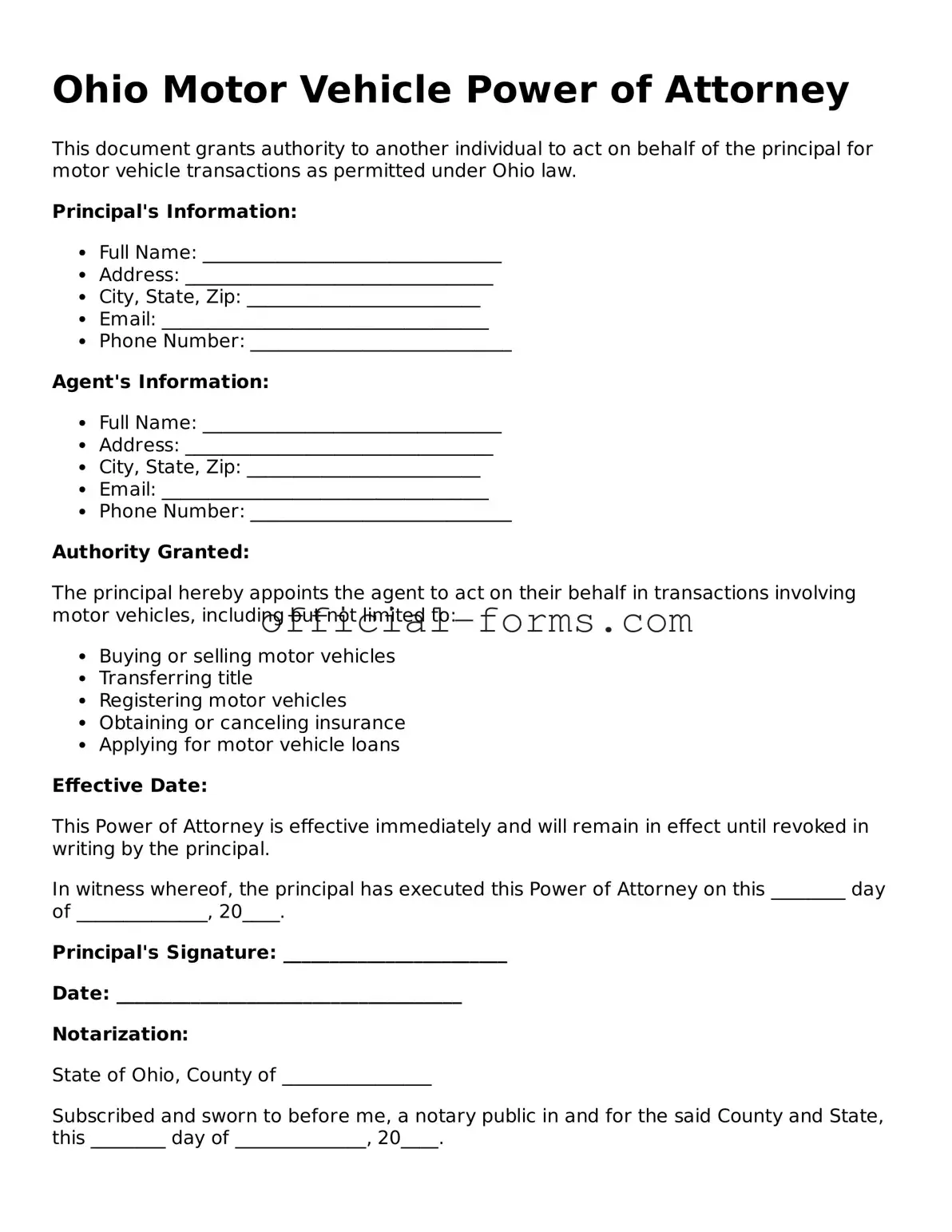Filling out the Ohio Motor Vehicle Power of Attorney form can be straightforward, but there are common mistakes that people often make. One frequent error is not providing complete information. Each section of the form requires specific details, such as the names and addresses of both the principal and the agent. Omitting even a small piece of information can lead to complications later on.
Another common mistake is failing to sign the form. It may seem obvious, but sometimes individuals forget to sign or date the document. Without a signature, the form is not valid, and the intended authority cannot be granted. It is essential to ensure that all required signatures are in place before submitting the form.
People sometimes misinterpret the scope of authority granted in the form. The Ohio Motor Vehicle Power of Attorney allows the agent to act on behalf of the principal regarding specific vehicle-related matters. However, some individuals may inadvertently grant broader powers than intended, which can create confusion or lead to misuse of authority.
Additionally, using outdated versions of the form is a mistake that can complicate the process. Laws and regulations can change, and it is crucial to use the most current version of the form to ensure compliance with Ohio law. Checking for updates or revisions can save time and avoid potential issues.
Another mistake involves not keeping a copy of the completed form. After filling out and submitting the Power of Attorney, it is wise to retain a copy for personal records. This ensures that the principal has a reference point in case questions arise in the future about the authority granted.
Lastly, people may overlook the need for notarization. While not always required, having the document notarized can add an extra layer of authenticity and may be necessary for certain transactions. It is advisable to check the specific requirements for notarization to avoid any potential problems.
